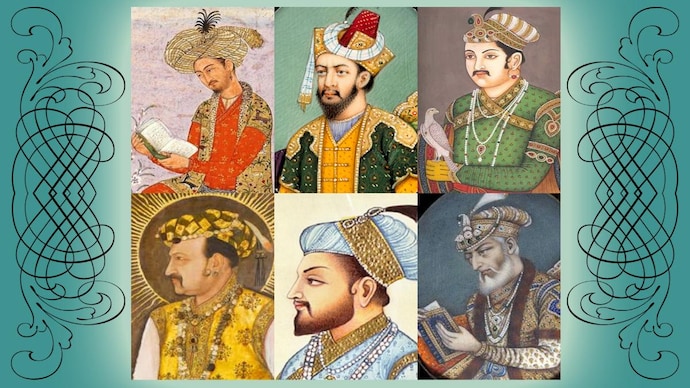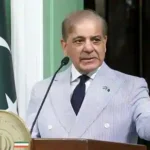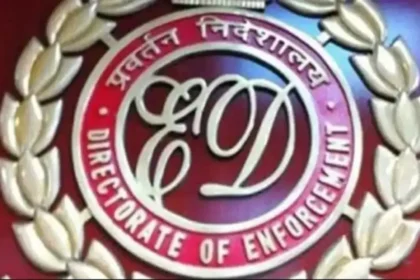NCERT Textbook Changes on Mughals Spark Concern Among Historians Over Distortion of History
NCERT’s text books for school children are wrought with controversies – especially how the body has gone about particular deletions in its revision of the syllabus, mainly of history and the social sciences. Accusations have flown thick and fast about the saffronisation of education and how the textbooks have been made to reflect the political views of the present Narendra Modi government. Many allege that they are designed to promote the Hindutva nationalist narrative of past glory and splendour.
Professor Neeladri Bhattacharya, alumni of St Stephens and Oxford University, was chief advisor to NCERT between 2005 and 2008. He is a visiting professor at Ashoka University and has taught at JNU for 40 years. Professor Farhat Hasan, an alumnus of AMU and Cambridge University, is a professor of history in Delhi University and was asked to write on Mughal history for NCERT text books in 2008.
Excerpts from the interviews are below.
Could you give two instances where the new NCERT syllabus has demonised the Mughals? And the reasons why?
Neeladri Bhattacharya (NB): If you are talking about the present textbooks in social sciences, it is clear that the history sections tend to represent the ancient past as a golden age, and the Mughal period as a dark age. The Mughal kings – including Akbar – are seen as brutal and cruel, ruthless and heartless. From the 1960s, academic historians in India and elsewhere have rejected such simplistic framings of history. We do not use the concept of ‘glorious’ and ‘dark’ any longer. We see how conflicting and contradictory forces are at work in all ages, how different things happen at different levels, and how societies change through the working of such interacting forces.
How can the Mughal age be possibly seen as dark? As many historians have shown, under Mughal rule there was undoubtedly oppression and exploitation of many forms – as indeed there was under all rulers of the time. But there was a great co-mingling of cultures, a dynamic and creative fusion. The Mughals opened themselves to Indian thought, invited Brahman and Jain scholars to the court, translated the Mahabharata and the Ramayana, and introduced elements of Persianate culture at various levels. Indian music, architecture, languages, art, clothing, cuisine – all bear the marks of this great cultural fusion.
Presenting the Gupta age as glorious is a way of claiming the Hindu past as great; and representing the Mughal past as dark, full of brutality and cruelty – is a way of demeaning it, and demonising Muslims.
Farhat Hasan (FH): Let me rephrase the question, because ideally we need to begin this discussion with some understanding of what we envision the role of the textbook. The purpose of a school textbook is to enlarge the understanding of young students to processes of social and cultural change. The framework should be explorations into the past, and efforts to enrich our understanding of multiple communities, of the culture of difference and our ability to tolerate and appreciate difference.
What has happened in the textbooks today is that the objective is to narrow down the project of history writing to a history of heroes and villains, each divided in terms of their respective religious affiliations. If you are a religious Muslim ruler, you are a villain. If you are not a Muslim ruler, you are categorised as a hero. The purpose of writing textbooks with this narrow outlook is to perpetuate divisiveness, to encourage hostility, antagonism in society. And far from enriching historical experience, or an appreciation of difference, it is to inculcate a culture of intolerance, antagonism and hostility. So, that’s my fundamental objection to this project of history writing.
There has been the criticism that the old text books focused largely on the Mughal Period, ignoring regional histories. Would you agree ?
NB: I am not sure which books are being referred to. In the last round of NCERT textbooks that many of us helped produce between 2005-2008, there is no excessive focus on the Mughal period.
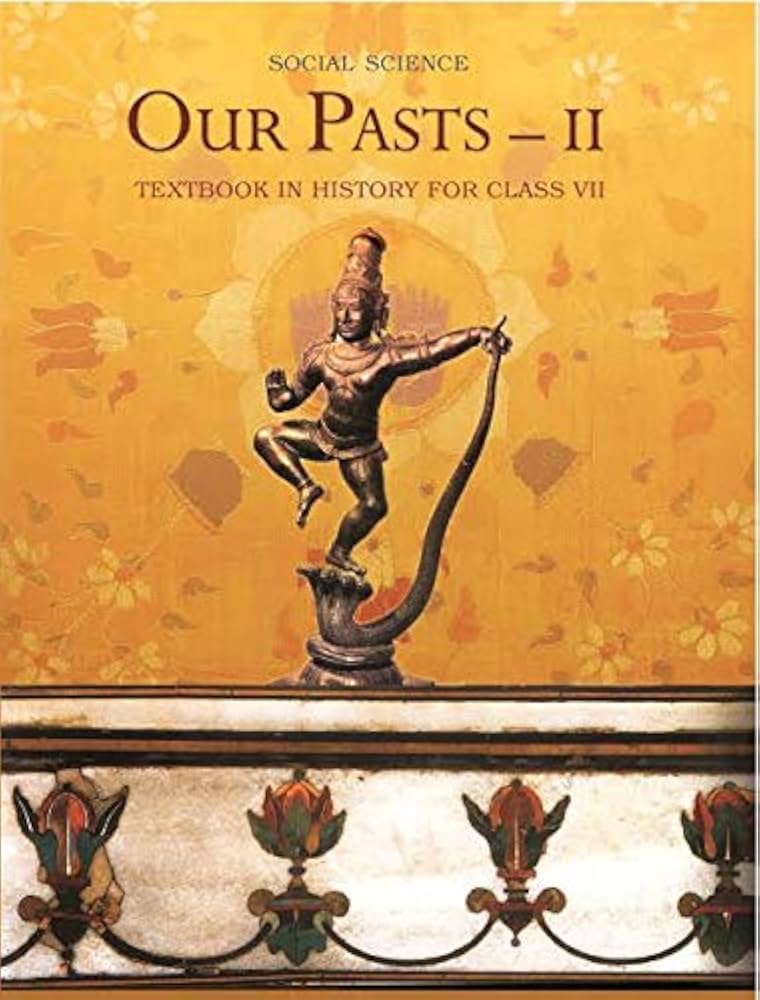
OUR PASTS I, for Class 6 focused on Ancient India, OUR PAST II, for Class 7 discussed what was earlier termed Medieval, and OUR PASTS III, for Class 8 was on the Modern. The focus on different chronological periods was almost equal.
In OUR PASTS II, there was a chapter on the Sultanate (Chapter 3), and one on the Mughals (Chapter 4). But equally there were two chapters on regional kingdoms. Chapter 2 discussed the Chalukyas, Rashtrakutas and Cholas, and Chapter 10 discussed the regional kingdoms that emerged in the 18th century – in Bengal, Hyderabad, Awadh. Each of these chapters were of about equal size – 15 pages each.
As for historical scholarship and research: regional history has in fact been thriving over the past 40 years, and more monographs focus on the regions than the centre.
So the accusations of neglect are false. Those who accuse are not really interested in the history of regions per se: they are interested in Hindu kingdoms, whether at the centre or at the regional level.
FH: It is not true at all. We were very conscious that we should not have a Mughal centric perception of early modern period in South Asian history, and there were sections devoted to Bengal, Assam, south India and the Deccan. For instance, I was asked to contribute a chapter on the Mughal Empire, but again, even as we dealt with the Mughals, we were very conscious of the need to bring in the conversation of the imperial Mughal court with different regions and localities, the kind of relations the Mughals had with Bengal, Assam, and Gujarat too.
But what are your objectives in writing these textbooks today, and why do you want to characterise Mughals as no more than brute tyrants? And ignore the vast dynamic of cultural encounter and efflorescence that defined that period of study? Bring in the historical experiences of different regions and localities to the centre but let’s not forget that the identities of many of these regions emerged in creative dialogue and interaction with the Mughal culture as well. Let’s not insist on localities and regions only to de-centre the Mughal estate, to marginalise or obliterate the historical experience of Mughals.
As a historian, do you believe there should be correctives in history?
NB: Historians in general do not talk of ‘correcting’ history, but of rethinking and reframing, offering new perspectives. Historical knowledge develops through debates and discussion, critiques and counter critiques, and through new research, and discovery of new sources.
The question to ask is: What is the politics of revision? Who revises? What is the implication of the revision? When the revision happens as part of research and intellectual curiosity, a process that deepens knowledge, widens our vision, then we need to welcome it. When the pressure is primarily narrowly political, a desire to rewrite the past for the communal politics of the present, then there is a huge problem. It is obviously not a process that will lead to an advancement of knowledge, or deepening of the discipline. We then need to see the politics that it seeks to serve.
FH: Of course we are always open to new viewpoints, and we were certainly inadequate in many spheres. If someone wants to write a better textbook, so be it. When I read through those textbooks again, I can see there is ample scope for improvement and revision — and that revision is necessary. Textbooks, after all, must summarise the state of existing scholarship in language that is easily comprehensible.
And since the range of language and experience expands over time, textbooks need to be revised as well. But the real question is: what kind of textbooks are being produced? Do they successfully incorporate the large domain of knowledge and understanding we’ve accumulated over time? Or are they simply promoting a particular perspective of our past?
Can you give two examples of how it helped expand the understanding of history better?
NB: Well, as I said, we need to talk about rethinking and revising history — not just correcting it — in order to expand our understanding. To give a few examples, the writings of feminist historians have shown us the need to gender history by challenging existing masculinist conceptions. Similarly, ecological historians have emphasized that nature itself has a history; it not only shapes human life but is also shaped by historical processes such as urbanisation, industrialisation, and agrarian modernization.
Historians of everyday life have also made us aware that our daily practices have historical roots — from the food we eat and the clothes we wear to the games we play. Moreover, people’s history movements — including history from below, subaltern studies, and the history workshop initiatives — have long argued that history is not just about great kings and monumental events, but also about the lives of ordinary people, the poor, the marginalized, and the subaltern.
‘Corrections’, in the sense you refer to, are necessary when blatantly false facts are circulated as historical truths. One clear example comes from the history section of the Class 7 textbook, commissioned and written under the direction of the BJP government in Rajasthan. It states that Maharana Pratap, a valiant fighter, clashed with the Mughal army in the famous Battle of Haldighati (1576), was grievously wounded and surrounded, but fought back heroically and forced the Mughal forces to disperse.
This version is the opposite of what actually happened. All established scholars agree that Maharana Pratap was defeated in the Battle of Haldighati and fled the battlefield. (See Jadunath Sarkar, Military History of India.) Such representations clearly reflect a desire to portray all Hindu rulers as victorious heroes against the Mughals. It is a clear case of historical falsification — and it must be called out as such.
FH: Textbooks written before us by able historians like Vipin Chandra, Ram Sharan Sharma and Satish Chandra did focus on the experience of the common people. There was an effort to move away from the court, the rulers and the aristocracy and to bring in experiences of ordinary people in shaping historical experience. But there were exclusions; gender was totally absent in those textbooks and we believed gender must be brought into the discussion as well.
We had chapters that specifically focused on gender relations in that period of study. Not just with reference to women rulers, gender is equally about constructions of norms of masculinity and manliness. When we engage with gender issues and relations, we bring in perceptions of masculinity and manliness, how they shaped hierarchies, distinctions and identities in our past. For example, I was dealing with the pre-colonial period and there was a conscious attempt to bring in issues of household, the idea being to highlight the nature of gender relations that informed everyday life at the time.
If you look at the chapter on the Mughals, or the Vijayanagara state and other states in south India, there was an effort to bring the imperial code in conversation with the harem, and to look at the harem as a political space instead of the way imperialist historians define it, as a space of Eros excesses and pleasure. So we were trying to build an alternative story-graphical framework in which the harem was seen as a political space and the system of rule was seen as shaped by the entanglement of the harem with the imperial court and vice versa.
We introduced cricket in a chapter on sports, to provide crucial insights into the cultural development of the period.
How do you counter accusations of temples being demolished to build mosques? Is the Hindutva narrative using hate and venom rather than truth and facts?
NB: The point is to understand the politics of temple destruction – why rulers and conquerors in the past often destroyed sacred structures and plundered sacred images. Places of worship in premodern times had symbolic value, they embodied sacred and temporal authority – the two being intimately connected. Temples legitimised power and were maintained by existing powers. They were also storehouses of treasure.
We tried to explain this in the NCERT Class 7 textbook of 2007. In Our Pasts II, the politics of temple destruction was discussed using several historical examples. For instance, in the ninth century, when the Pandyan King Shrimara Shrivallabha invaded Sri Lanka and defeated King Sena I, a Buddhist chronicler recorded in detail how he seized golden images of the Buddha. In response, Sena II later invaded Madurai to recover those statues.
Similarly, in the eleventh century, Chola King Rajendra I built a Shiva temple and filled it with sacred statues — of Ganesha, Durga, Shiva, and Kali — taken from other kingdoms. Around the same period, Sultan Mahmud of Ghazni attacked temples during his military campaigns, looting their wealth to portray himself as a great hero of Islam. These examples were meant to show that temple destruction occurred across different regions and dynasties, and often served political, religious, or symbolic purposes.
The entire Chapter 5, ‘Rulers and buildings’, which discussed the politics of temple demolition within the culture of the time was deleted from the textbook during the rationalisation drive of the NCERT. The reason is obvious. It talked of temple destruction not just by Muslim rulers, but also Hindu kings. The desire clearly is not to understand the history of a political phenomenon, but to villainise Muslim rulers.
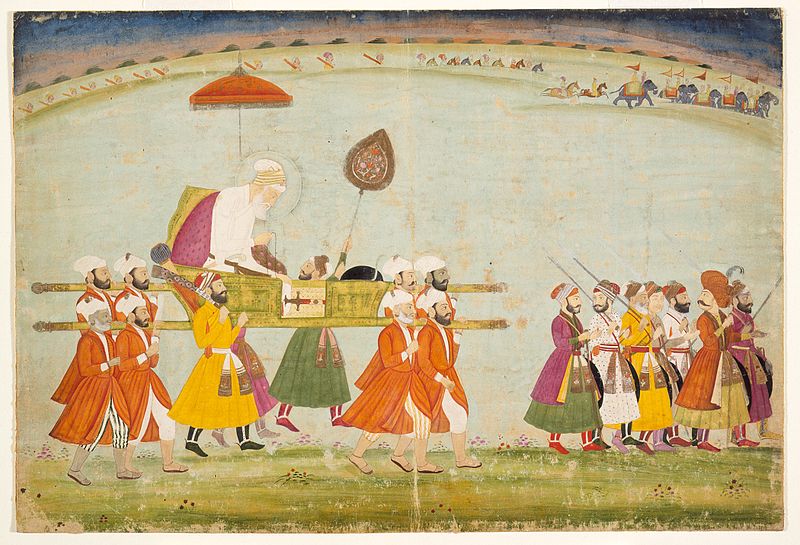
FH: Let’s look at historical facts: Aurangzeb comes to the throne in 1658 and it is only in the last two decades of his rule there are instances of temple destruction; and when he imposes jizya, a tax for non-Muslims. But immediately after his death in 1707, there’s an imperial order by Aurangzeb’s successor, Bahadur Shah condemning the shift in Aurangzeb’s policies, and a firm reiteration of the policy of Sulh-i Kul. This was followed by the abolition of jizya, and a return to the policy of state patronage and protection to all places of religious worship, including of course the temples.
So, do you envision the entire Mughal rule and the sultanate as defined by these two decades? Aurangzeb also continued to give grants to the temples at Mathura and Vrindavan and that was a well-established Mughal practice – and the evidence comes not from Mughal documents but documents recovered from the temples itself.
The documents reveal a continuing tradition of providing sustained patronage to the temples, and in Agra too. So strong is this entrenched practise that despite his personal predilections, Aurangzeb continued with this practice. So, you have evidence of the destruction of a few temples coexisting with evidence of a sustained patronage to other temples.
It was not about religion, but politics. The Mughal empire was declining in this period, it was cornered by the Jats, and the temples in Agra and Delhi patronised by the Jats were destroyed because they were providing shelter to the rebels.
Similarly, with the Maratha uprising, the Marathas were supported by Rajputs who had their temples in and around Banaras. These were complex political issues that needed to be looked into.
There’s this attempt to glorify Shivaji as a great national Hindu emperor who vanquished the Mughals? How true is this narrative?
NB: Jadunath Sarkar did view Shivaji as a Hindu patriot resisting Muslim tyranny — a proto-nationalist attempting to establish a Hindu kingdom during the era of Muslim empires (Shivaji and His Times, 1919). While Sarkar was a great historian, his interpretation was shaped by religious binaries (Hindu/Muslim) and reflected the moralistic tone typical of Victorian historians of his time, who often made judgments about historical figures as good or bad.
However, later scholars of Maratha history — such as Richard Eaton and Stewart Gordon — have challenged this interpretation. They argue that Shivaji’s struggle was for regional power and autonomy against an expanding, centralising Mughal empire, at a time when Deccan kingdoms like Bijapur and Ahmadnagar were collapsing. Shivaji’s goal was the sovereignty of a Maratha kingdom, not the formation of a national empire. His actions were driven by strategic and pragmatic concerns rather than religious ideology. He even appointed Muslims like Ibrahim Khan to high positions, and his use of Hindu rituals during his 1674 coronation was primarily to secure political legitimacy.
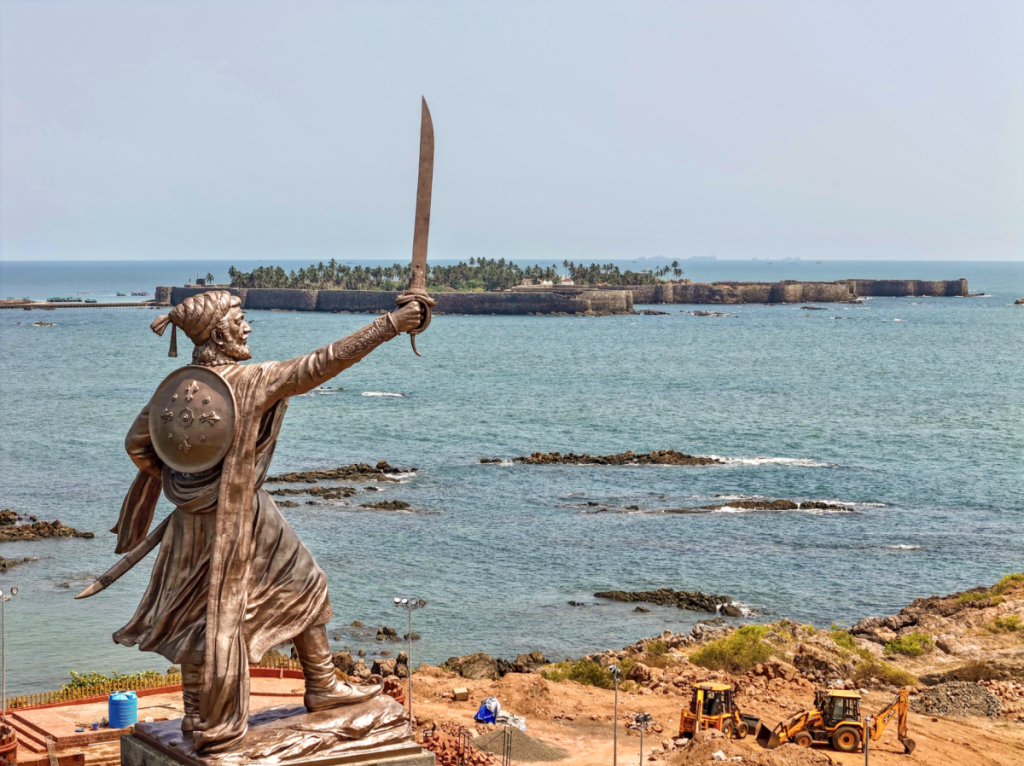
FH: Yes, there’s a deliberate attempt in the text books today to position Marathas as the founders of an Indian nation when there was no concept of a nation state. There’s an attempt to glorify Shivaji, and I am okay if you want to glorify Shivaji or any other Maratha leader. But the Mughal-Maratha conflict must be understood as a political conflict emerging in the wake of the decline of the Mughal Empire in the 18th century. Shivaji and the Marathas did not envisage themselves as an alternative political formation, they were only fighting for a rightful place within the Mughal Empire.
The conflicts in the Mughal heartland of Gujarat, Bengal, even Delhi and Agra was a demand by Marathas, Sikhs, Jats among others for the restoration of their zamindari rights. They saw themselves as working within the Mughal imperial administrative paradigm. This was true of all political formations in the 18th century, from Bengal to Punjab, and their political culture was significantly derived from the Mughal administrative experience; they put in place institutional structures that were imitations of the Mughal state.
Let’s not dichotomise these political formations and then communalize them. These are important developments, but we need to have a more complicated framework to engage with these developments.
Was Shivaji earlier portrayed as a mercenary who was a Maratha leader, with curious battle strategies rather than in this new image of a Hindu warrior king?
NB: Most historians who have written on Shivaji have admired his innovative military tactics – use of guerrilla warfare in rugged terrain, control over strategic fortresses (some estimates suggest he refurbished and built over 300 of them) turning the Sahyadri range into a defensive stronghold. But scholars also suggest that these tactics – while appropriate for the ecological terrain of the region – were not suited to long-term expansion of the kingdom over a varied terrain.
Maratha power, however, was not just based on military strength. Sumit Guha has shown how Marathas also built their power by creatively forging a Maratha identity, strategically constructing a memory to legitimise their rule, and building a resilient economy.
FH: Shivaji was really a zamindar, with aspirations for sure, but he did not envisage forging an alternative political formation. There’s also no historical evidence that can reveal the caste status of Shivaji and it’s true that once the claimants to authority or when political entrepreneurs capture authority, they build their own narrative of ritual sovereignty and ritual superiority. This happens in all cases, and I suspect this may have happened with reference to Shivaji too. Building a narrative of superiority is an important historical device for people who capture political authority.
What do you think of Shivaji’s iconic Hindu emperor status?
NB: Shivaji was a powerful regional leader with considerable charisma. His aim was to consolidate an effective regional sovereign structure of power, a confederacy, not a centralised state. He was not building a national empire. The idea of a nationalist in the seventeenth century is, in fact, anachronistic since the conception of nation state did not exist at that time anywhere in the world.
FH: I’m against personality oriented history writing, so I wouldn’t want to assess Shivaji either way. But as I have explained above, Shivaji or for that matter Marathas, did not see themselves as an independent sovereign contesting Mughal imperial sovereignty. They were keen to find a lucrative and appropriate place within the Mughal imperial dominion. The Marathas did not come up with an alternative political system ideologically, culturally or politically in contestation with the Mughal dominion, that’s clear from the way they imbibed many of the institutional and structural arrangements that were so characteristic of the Mughal state.
However, the argument of Shivaji being a Hindu pasha is quite anachronistic. There’s no historical evidence to suggest it, and the very fact that he was just so very anxious to work within the Mughal dispensation actually disputes this simplistic trend of history writing.
Is history today becoming more personality oriented, of heroes and villains rather than a look at contributions that shaped the country’s history?
NB: No, certainly not. What you are referring to is the way history is being mobilised for political purposes, for sectarian and communal ends.
At the level of historical research and scholarship – history as I have already said is a dynamic field, and continues to open up ever new fields of research and thinking.
And at the level of the school, I think, children have a right to get a glimpse of what history can mean, how the field is changing, and how historians read historical records and write history. They need to feel the excitement that a dynamic field generates. We had tried to do that in the NCERT textbooks produced between 2005 and 2008. Unfortunately in the textbooks which are now being introduced, students are unlikely to get a feel of the way historical knowledge has developed. What we have is old style histories around dynasties and personalities.
FH: In the present text book framework, what comes up repeatedly and insistently is the emphasis on the brutality, arrogance and violence of Muslim rulers – from the Mughals and before them, the Sultanate rulers. They’ve all been described with a very broad brush of rulers who were intolerant, and were tyrants. But the Mughals and the Sultanate created a very rich cultural space described as Hindustan and scholars who have worked on Hindustan and the representation of Hindustan in the Persianate world and outside, in parts of Europe as well, have found that Hindustan was imagined as a culture, and globally as a space that tolerated difference, and was enriched by difference.
This culture was marked by a very creative engagement between the cultural resources of the Indic civilisation as also the Persianate world, even Sanskrit witnessed a sort of revival in the Mughal period largely owing to the patronage of the Mughal state.
There is a rich culture of creative engagement between the Persianate world and the Indic traditions and to reduce, ignore, or marginalise that creative engagement and focus only on individual rulers as tyrants is a problem. Violence was an important component to state formation and violence is crucial to all forms of state activity, even today.
For instance, violence occurred when rajas, chieftains, withdrew the peshkash or tribute they were obligated to pay the reigning Mughal at the time, which led to routine violent conflicts. There was a similar problem with zamindars too. This could be characterised as a conflict between two contending political powers or as a conflict between Hindu and Muslim rulers. And that’s where the problem lies.
How do you define a Hindu? Religious identities were very fluid, very malleable in this period of time, and most studies tell us that people did not define themselves in terms of their religious identities. So this category of a Muslim-Hindu conflict is something that is anachronistic and doesn’t apply to this period of study.
It was the British that demonised Mughals as they defeated the Mughals to take their place to rule India. Would you agree?
NB: Yes, the British demonised Mughal rule and this perception has been appropriated by the Hindu Right.
But this relationship to British perception is highly selective. In their quest to displace existing rulers and annex their kingdoms, the British criticised all local rulers — regardless of whether they were Hindus (like the Marathas and Rajputs), Sikhs (such as Ranjit Singh, who was labelled an oriental despot), or Muslims. These rulers were uniformly portrayed as effete, politically weak, decadent, corrupt, and inefficient. The British depicted them as remnants of a decaying feudal order, incapable of self-rule, and blamed them for lawlessness, oppression, and economic decline within their territories.
Today, the Hindu right selectively draws on these colonial portrayals to construct a particular memory of the past. They readily accept what the British said about Mughal rule, while ignoring the equally harsh assessments of Hindu rulers. This selective appropriation reflects a lack of interest in understanding the politics of representation — why a statement was made, in what context, and how it was meant to shape perceptions of the past.
FH: Strangely, as I went through the new text book, I noticed that the discussion on Hyder Ali and his son, Tipu Sultan has been removed. They were rulers of Mysore and were engaged in fierce battles with the British, to resist British expansion in south India. But the Anglo-Mysore wars have been removed, however, the Anglo-Maratha wars have been discussed in great detail. So wherever the challenge to British has come from Hindu rulers, has been retained, and the reason is clear to see.
It is British imperialist historiography that emphasised that South Asians define themselves primarily in terms of their religious identities. This served as a trope to justify imperial domination because the argument was that these are essentially religious people defined entirely by faith and therefore quite incapable of engaging in political and economic affairs. So all conflicts in India are inherently religious, not economic or political, and this is the same argument used by right wing historians.
But it wasn’t true pre-colonial, as Indians had a sense of place, origin, a sense of family that came from multiple sources; identities that imbibed differences which were inherently contradictory too. So a person would go to a mosque in the morning and later, ring a bell in the temple too.
It is the British colonial effort and modernity with its emphasis on tidiness and removing ambiguity that pigeonholes people into Hindus and Muslims. And it is this simplistic notion that is taken up by the communal historians today who insist on looking at the entire pre-colonial history as marked by a continuous antagonism between the two religions.
Of course, British imperial stories were not so creative as to say there was plastic surgery in ancient India.
Also Read: PM Shehbaz Sharif Hails Landmark Pakistan-US Trade Agreement as Boost for Bilateral Ties


